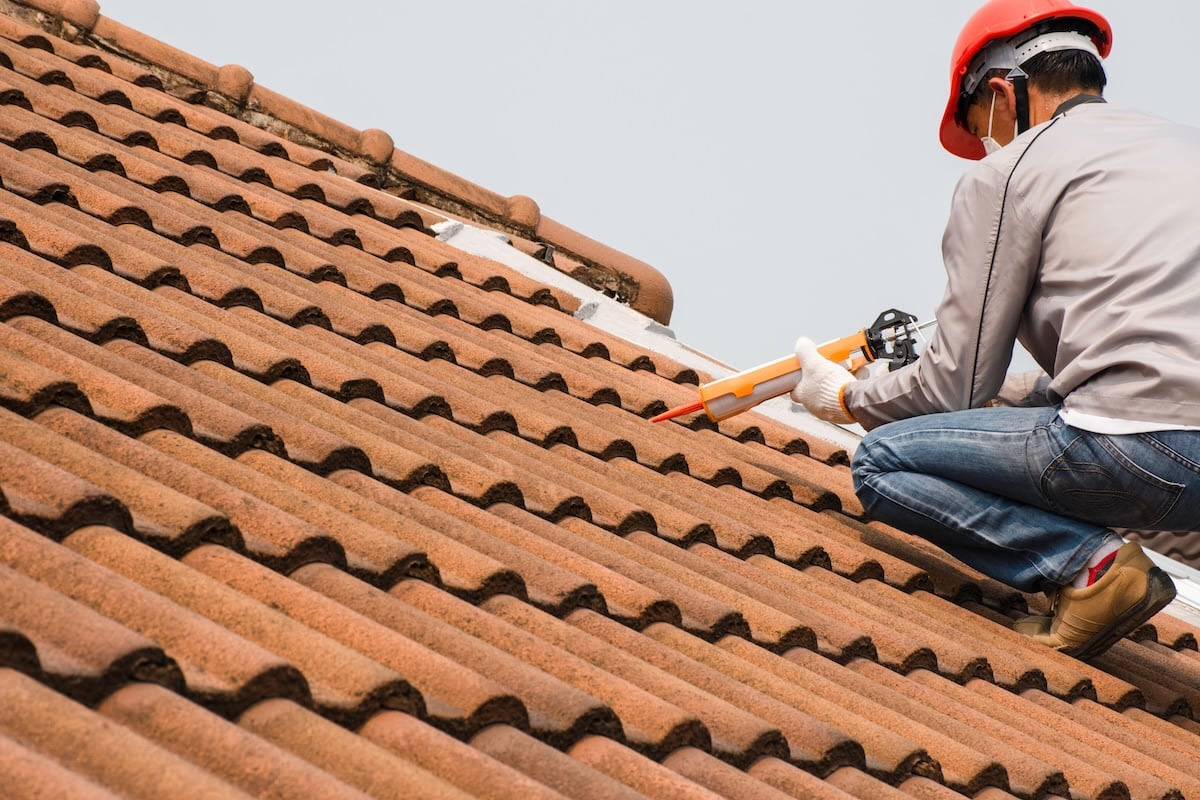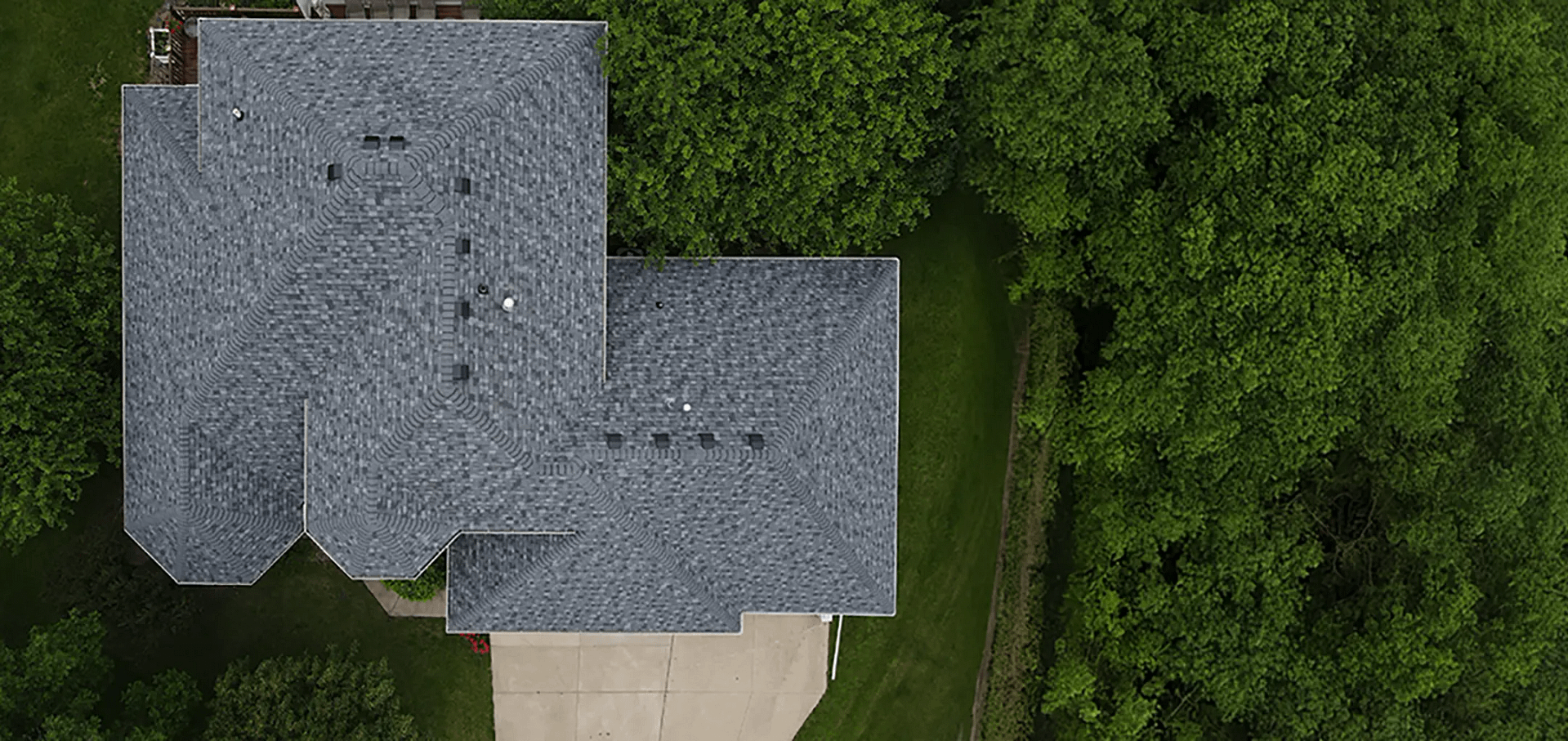Understanding the roof leak repair cost is essential for any homeowner facing water damage, ceiling stains, or other indicators of a leaky roof. Repairs can range from minor fixes for a small leak to a complete roof replacement, depending on the severity of the damage. With labor and material costs fluctuating every year, knowing what to expect in 2025 helps you plan your home maintenance budget effectively.
Here’s what we’ll cover:
- Factors influencing roof leak repair costs in 2025.
- The differences between minor repairs and full roof replacement.
- Why hiring a reliable roofing contractor is essential for proper maintenance and long-lasting results.
If your roof has been giving you trouble, this guide will provide the clarity you need to make informed decisions about your home.
6 Factors That Influence Roof Leak Repair Costs
Wondering how much it costs to fix a roof leak? In 2025, standard roof leak repairs range from $150 to $1,500, with more complex cases costing $5,000 or more. Here are the six biggest factors that influence how much you’ll pay — so you can better estimate your repair budget and avoid unexpected costs.
1. Scope of the Damage: Minor Fix or Full Replacement?
The bigger and more complex the damage, the higher your repair costs will be.
Minor issues like a missing shingle are inexpensive to fix, while large or long-ignored leaks affecting the structure will cost significantly more.
- Minor Repairs (small leaks, flashing repairs): $150–$500
- Moderate Repairs (underlayment damage, decking patchwork): $500–$1,500
- Major Repairs (widespread damage, structural fixes): $2,500–$5,000+
- Full Roof Replacement: $7,000–$15,000+, depending on roof size and complexity
2. Roofing Material Type: Quick Cost Comparison for Repair & Replacements
Your roofing material directly affects both labor costs and replacement part pricing.
Asphalt shingles are typically the most affordable, while premium materials like tile and slate are more expensive to repair and require specialized contractors.
| Roofing Material | Repair Cost Range | Replacement Cost Range |
|---|---|---|
| Asphalt Shingles | $150–$800 | $5,500–$10,000 |
| Metal Roofs | $300–$1,200 | $8,000–$15,000 |
| Tile/Slate Roofs | $500–$2,500 | $15,000–$30,000 |
| Flat Roofs | $300–$1,000 | $6,000–$12,000 |
Quick Answer: Asphalt shingles are the most affordable to repair, while slate and tile are the most expensive.
3. Labor Rates in 2025
Labor costs make up a major portion of roof repair expenses, and they vary by region and complexity.
In 2025, average roofing labor rates in the Midwest range from $55 to $90 per hour, with steeper or more hazardous jobs costing 20–40% more.
Tip: Hiring during off-peak seasons (late fall or early winter) may reduce labor costs by 10–15%.
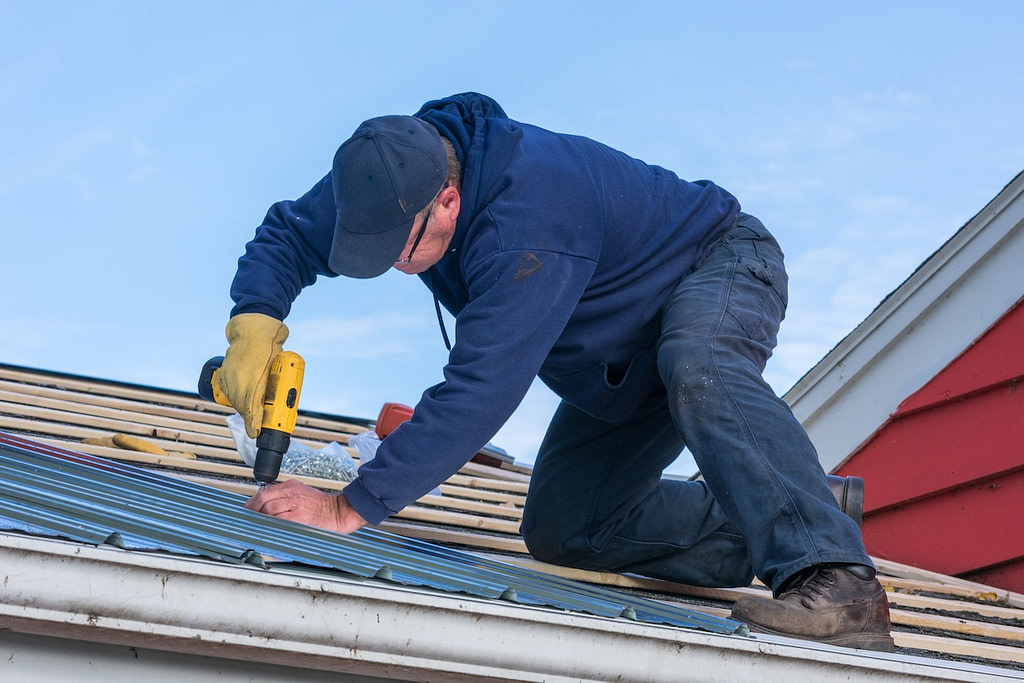
4. Season and Weather Impact
Busy seasons and recent storm activity can push up both labor and material costs.
After major storms, especially in the Midwest, prices can jump due to limited contractor availability and increased material demand. Scheduling repairs outside of spring and summer peaks can offer savings.
Note: Industry reports show material costs can rise 10–25% after storm surges, particularly for asphalt shingles and metal components.
5. Preventative Maintenance vs Emergency Fixes
Regular maintenance helps avoid costly emergency repairs caused by neglected small issues.
An annual inspection ($150–$300) can catch early signs of damage, while emergency repairs triggered by severe leaks can cost $2,000 or more.
Cost-Saving Tip: Fixing minor issues early reduces the risk of costly structural repairs later on.
6. Your Geographic Location
Where you live impacts local labor rates, contractor availability, and material transport fees.
Urban areas generally have more contractors but higher hourly rates. In contrast, rural homeowners may face fewer options and slightly elevated costs due to travel time and limited suppliers.
North Iowa Note: Roof repairs here tend to cost 10–15% less than national averages, but can spike after regional storms when demand increases sharply.
Final Takeaway:
Stay proactive with annual inspections to keep costs low, choose the right season to schedule repairs, and always get quotes from local trusted roofers.
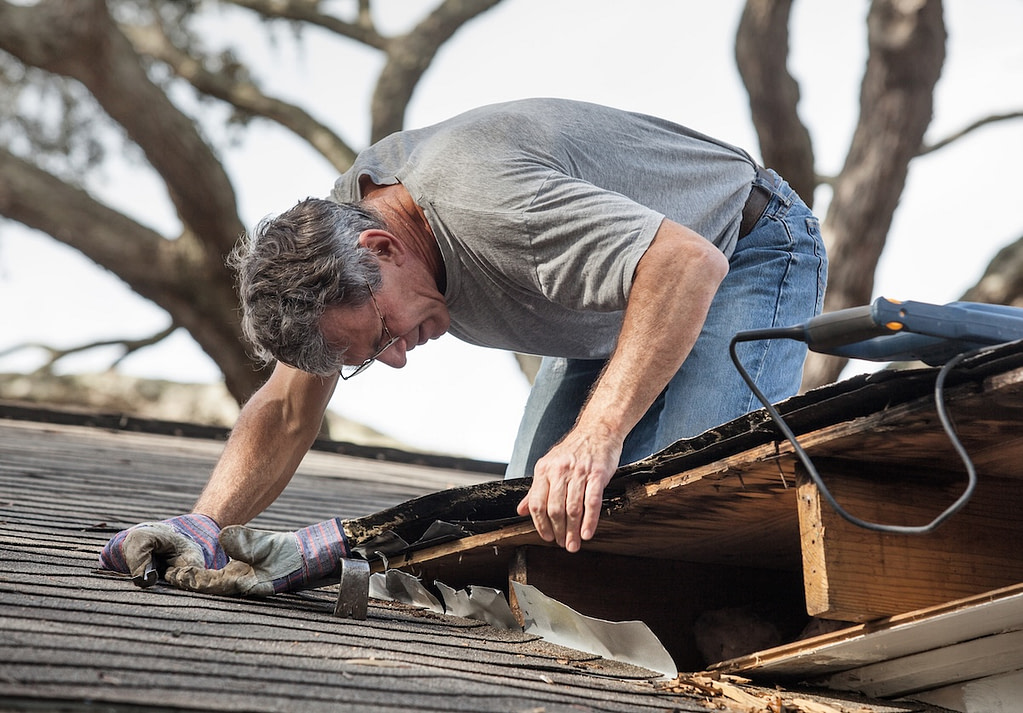
Types of Roof Repairs by Damage Severity
Roof repairs range from quick, affordable fixes to full-scale replacements. This guide breaks down common repair types by severity level — helping you understand what’s involved and what costs to expect in 2025.
Minor Roof Repairs (Typical Cost: $150–$500)
Minor repairs are quick fixes that prevent small problems from becoming costly damage.
Common examples include:
- Replacing a few shingles damaged by wind, hail, or wear.
- Fixing small leaks caused by cracked or unsealed flashing.
- Resealing vents or chimney collars.
- Securing loose gutters, fascia, or soffits to prevent water backup.
Quick Tip: Minor repairs are the most budget-friendly and often completed in a single visit by a roofing contractor.
Moderate Roof Repairs (Typical Cost: $500–$2,000)
Moderate repairs address more widespread or recurring issues that affect the integrity of your roof.
These repairs often include:
- Locating and fixing persistent leaks affecting larger roof sections.
- Replacing damaged or corroded flashing around skylights, chimneys, or vents.
- Repairing sections of rotted underlayment, plywood decking, or minor structural components.
- Correcting sagging rooflines caused by water retention or aged materials.
Helpful Insight: These projects may require several work hours or multiple visits, especially if damage is hidden beneath the surface.
Major Repairs and Roof Replacements (Typical Cost: $2,000–$5,000+; Full Replacement $7,000–$15,000+)
Major repairs or roof replacements deal with extensive damage, structural concerns, or aging roofs beyond simple patchwork.
Examples include:
- Fixing significant leaks due to storm damage or roof neglect.
- Replacing large roof sections, including underlayment, decking, and sometimes rafters.
- Repairing storm-related structural issues like impact damage from fallen trees or severe hail.
- Full roof replacement when repairs exceed 40–50% of the roof’s surface area or when the roof reaches end-of-life.
Homeowner Tip: Roof replacements come with long-term warranties (20–50 years) and may be more cost-effective over time than repeated major repairs.
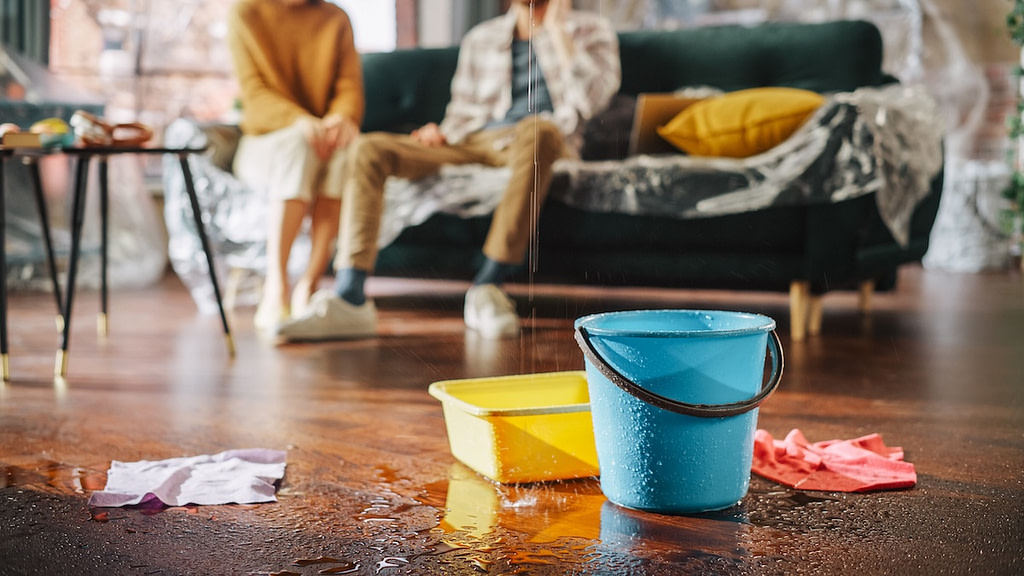
How to Properly Maintain Your Roof (And Save on Costs!)
As roofing professionals serving North Iowa, we’ve seen firsthand how routine maintenance can prevent thousands of dollars in avoidable damage. Below are five maintenance strategies we recommend to our clients to extend roof life and avoid unnecessary repairs — based on what actually works in the Midwest climate.
1. Schedule Professional Inspections at Key Times
Most homeowners know they should inspect their roofs annually — but timing matters. We recommend inspections:
- After winter thaw (March–April): to catch ice dam damage, lifted shingles, and flashing movement.
- After storm season (late summer–early fall): to address wind or hail damage before winter stress sets in.
These aren’t just routine checks — they’re strategic touch points that help us find hidden issues before they lead to interior leaks or structural repairs.
2. Address Ventilation and Attic Conditions
Poor attic ventilation accelerates roof aging — especially with Iowa’s freeze-thaw cycles. We often find:
- Mold and moisture buildup from blocked soffit vents
- Warped decking from trapped summer heat
We recommend checking attic airflow as part of every maintenance inspection — it directly impacts how long shingles and roof structures last.
3. Don’t Overlook Flashing — A Leading Cause of Roof Leaks
Flashing, which seals roof joints around chimneys, skylights, vents, and sidewalls, is one of the most common sources of roof leaks. Unlike shingles, flashing is susceptible to separation, corrosion, or cracking over time. Especially in areas exposed to frequent temperature changes or heavy precipitation.
Homeowners often underestimate how quickly flashing can deteriorate:
- Older roofs (10+ years) are particularly prone to flashing wear.
- Improperly sealed or aged flashing can allow water intrusion even if shingles are in good condition.
- High-risk areas include chimney bases, roof-to-wall transitions, and skylight perimeters.
Professional Tip: Regular maintenance should always include a close-up inspection of all flashing areas. Proactively resealing or replacing damaged flashing prevents minor leaks from escalating into costly structural repairs.
4. Perform Gutter Maintenance with Roof Drainage in Mind
Gutter cleaning isn’t just about avoiding overflow. It’s about preserving proper water movement away from roof edges and fascia. We’ve seen clogged gutters cause:
- Soffit rot
- Ice dam formation
- Backed-up water beneath shingles
We advise integrated gutter and drainage inspection during regular service visits — particularly for homes with complex rooflines or multiple valleys.
5. Monitor Seals and Caulking at Penetration Points
Rubber boots, pipe collars, satellite mounts, and solar panel anchors often fail before shingles do. We routinely find cracked caulking and deteriorated seals during maintenance visits — these small details are high-risk leak points if ignored.
Young Construction Can Help With Roof Repairs!
When it comes to roofing, expertise and trust make all the difference. At Young Construction, we’re proud to serve homeowners with superior roofing services backed by years of industry experience. Whether you’re dealing with a minor repair or a full roof replacement, we take a tailored, customer-first approach to every project.
Don’t wait for small roof problems to turn into costly repairs. Contact Young Construction today for a free estimate and start protecting your home the right way.
FAQs
How much does it cost to fix a small roof leak?
Small repairs like replacing a few shingles or resealing flashing typically cost $150 to $500, depending on the materials and accessibility.
What is considered a major roof repair?
Major repairs involve large sections of damage, underlying structural repairs (like decking), or storm-related restoration. Costs generally range from $2,000 to $5,000+.
Does insurance cover roof leak repairs?
Insurance may cover roof leaks if they are caused by a sudden event like hail, wind, or fallen debris. Routine wear and neglect are typically not covered. We recommend checking your policy and documenting any storm damage quickly.
When should I consider a full roof replacement?
If your roof has extensive leaks, is nearing the end of its lifespan (typically 15–25 years depending on material), or if repairs would cover over 30-50% of the roof surface, replacement may be more cost-effective.
